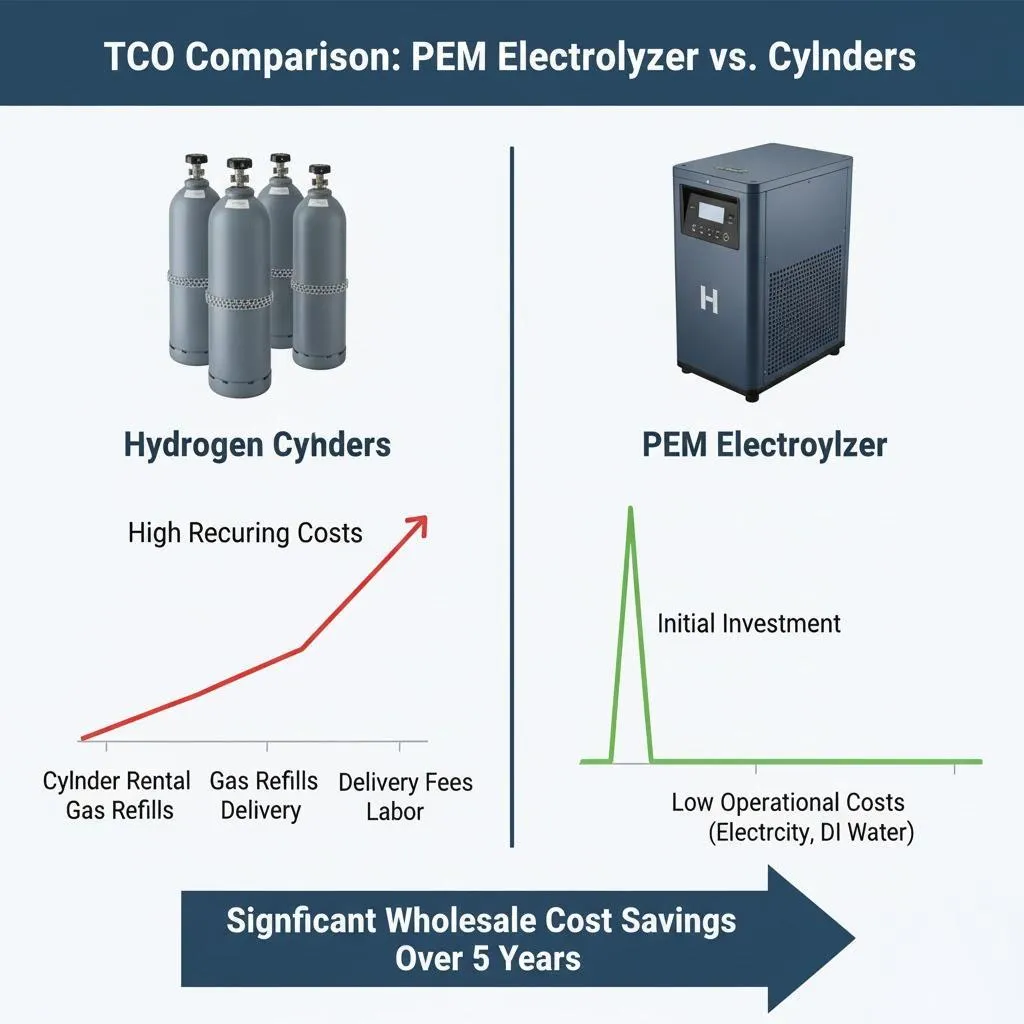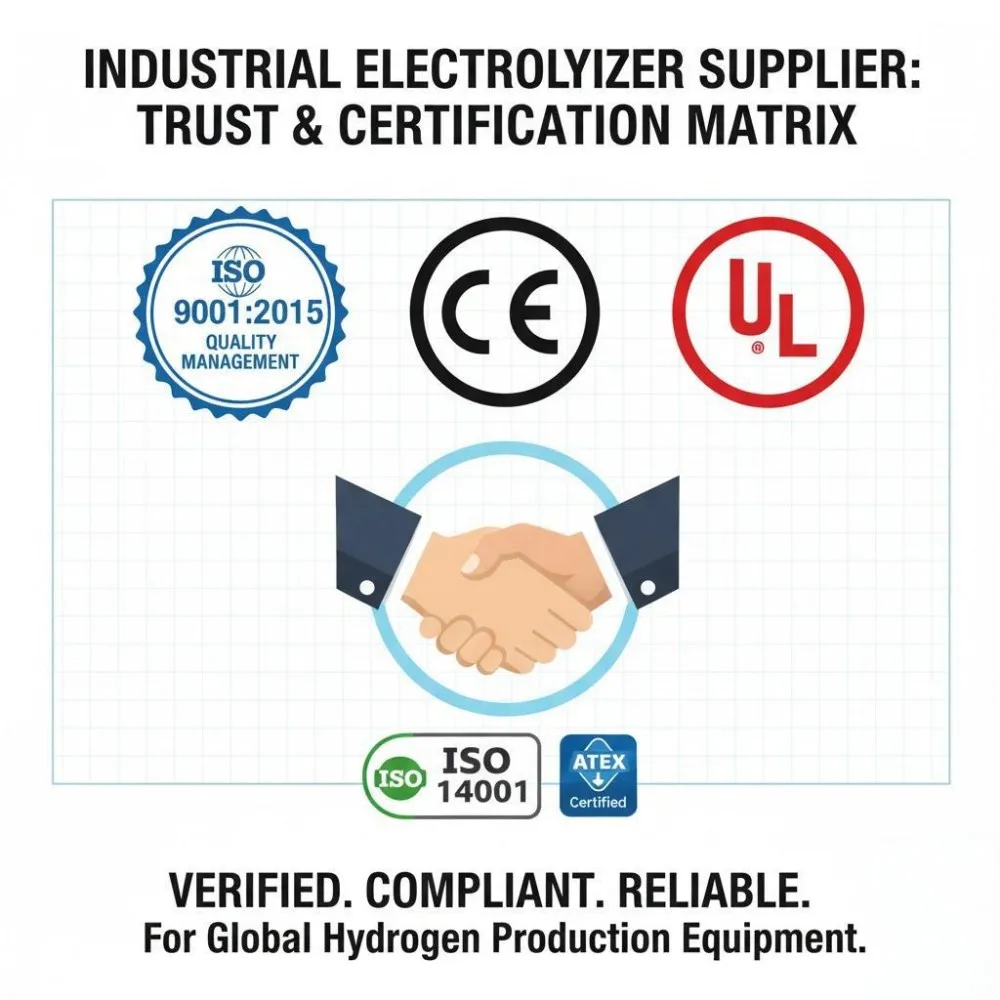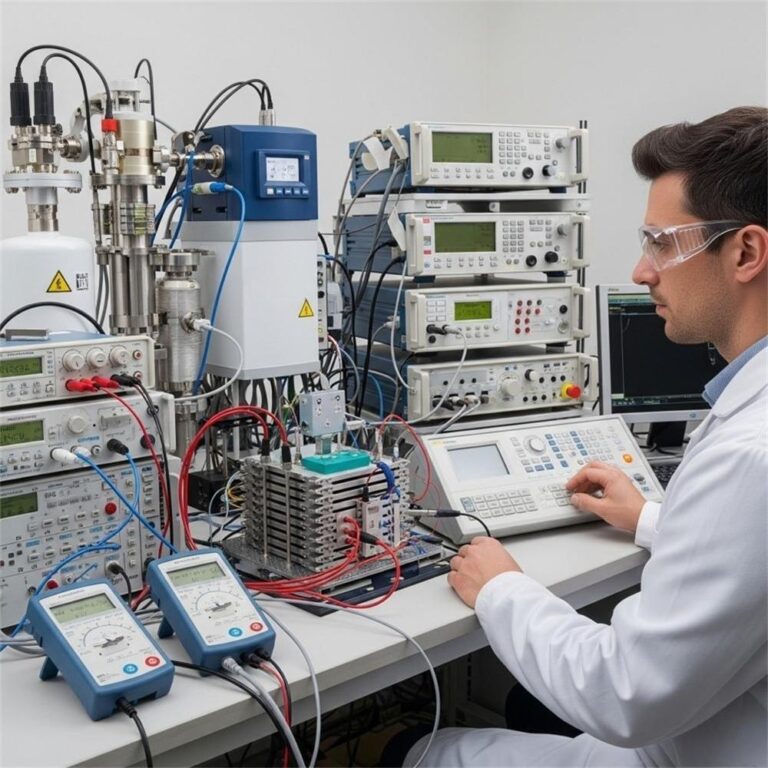Introduction
Hydrogen demand is surging, expected to grow sixfold by 2050 as industries strive for cleaner energy solutions. Integrated hydrogen production plants, featuring efficient oxygen co-production, are at the forefront of this transformation. These advanced systems combine the generation of hydrogen and oxygen within a single, streamlined operation, offering significant efficiency, cost, and environmental benefits.
Integrated hydrogen production plants, designed with efficient oxygen co-production systems, represent a significant advancement in industrial gas supply, offering enhanced efficiency, reduced costs, and environmental benefits. This article will explore the plant design, the unique advantages of integration, the value of oxygen co-production, key industrial applications, and critical maintenance strategies to ensure optimal performance.
Plant Design and Components
A modern hydrogen production plant consists of several key components working in harmony to efficiently generate hydrogen and oxygen. Let’s dive into these fundamental elements:
Electrolyzer Technology
Electrolyzers form the heart of hydrogen production. They split water into hydrogen and oxygen through electrolysis. The three main types used in integrated systems are:
- Proton Exchange Membrane (PEM) Electrolyzers: Known for their compact design, rapid response time, and high purity hydrogen production. Ideal for renewable energy applications but relatively high in cost.
- Alkaline Electrolyzers: A mature and cost-effective technology, offering robustness and longevity, though they operate at lower current densities compared to PEM systems.
- Solid Oxide Electrolyzer Cells (SOEC): These operate at high temperatures, allowing higher efficiency but presenting challenges in materials durability and system complexity.
Each technology offers trade-offs between efficiency, cost, and system integration ease, depending on the intended industrial application.
Gas Separation and Purification Units
After electrolysis, the gases produced need separation and purification:
- Pressure Swing Adsorption (PSA): A highly effective technology for separating hydrogen from impurities.
- Membrane Separation Technologies: Offer compact and energy-efficient alternatives for gas purification.
These units ensure the production of high-purity hydrogen and oxygen suitable for sensitive industrial uses.
Compression and Storage Systems
Hydrogen and oxygen must be safely compressed for storage or transportation:
- Compression Units: Compress gases to the required pressure levels for storage.
- Storage Tanks: Options include high-pressure gas cylinders, cryogenic liquid tanks, and underground storage for large-scale systems.
Safety measures like over-pressure protection, leak detection systems, and appropriate material selections are vital to prevent hazards.
Instrumentation and Control Systems
Automation ensures the integrated system runs safely and efficiently:
- Process Control Systems: Monitor variables like temperature, pressure, and flow rates.
- Safety Systems: Automatically shut down operations during abnormal conditions, enhancing plant safety.
Advanced control technologies allow remote operation, predictive maintenance, and real-time optimization, contributing to higher operational reliability.
Visual Aid Tip: A simplified process flow diagram showing electrolysis, gas separation, compression, and storage stages would enhance understanding here.
Integrated System Benefits
Integrating hydrogen and oxygen production within a single plant framework unlocks numerous operational and strategic advantages:
Enhanced Energy Efficiency
Waste heat generated during electrolysis can be captured and reused elsewhere in the system, significantly boosting the overall energy efficiency. Advanced heat exchangers recover thermal energy from compressors and gas purification stages, reducing the external energy input needed.
Furthermore, by producing hydrogen and oxygen simultaneously, the system optimizes energy use across both outputs, rather than treating them as separate processes requiring distinct energy sources.
Reduced Capital and Operating Costs
Integrated plants leverage shared infrastructure — such as common piping, control systems, and utilities — thereby cutting down the initial investment cost. Operating costs are also lower because labor, maintenance, and energy expenses are distributed across two valuable gas products rather than just one.
Smaller Footprint
By designing systems that produce both hydrogen and oxygen in tandem, space requirements are minimized. This makes integrated plants particularly suitable for industrial zones where land availability is limited or where companies aim to maximize the utility of existing spaces.
Improved Safety
Integrated control systems enhance safety by continuously monitoring gas concentrations, pressures, and equipment status across the entire facility. Automated emergency shutdown procedures, integrated fire suppression systems, and rigorous maintenance protocols ensure that hazards are mitigated promptly.
Reduced Environmental Impact
Producing high-purity oxygen alongside hydrogen significantly enhances the sustainability profile of the plant. Oxygen reduces the need for additional air separation units, which are energy-intensive, thereby cutting down the total carbon footprint. Additionally, co-produced oxygen often displaces the need for fossil-fuel-based oxygen production methods, supporting broader environmental goals.
Oxygen Co-Production
One of the most compelling features of an integrated hydrogen production plant is its ability to co-produce high-purity oxygen.
Oxygen Applications
The co-produced oxygen can be used across multiple industries, such as:
- Medical Applications: Hospitals and clinics rely heavily on medical-grade oxygen for patient care.
- Steel Manufacturing: Oxygen accelerates combustion processes in blast furnaces, making steel production faster and cleaner.
- Wastewater Treatment: Oxygen improves aerobic digestion, speeding up the breakdown of organic matter.
- Chemical Synthesis: Essential for producing chemicals like ethylene oxide and nitric acid.
These diverse applications provide strong markets for selling or utilizing co-produced oxygen.
Revenue Generation
By capturing and selling high-purity oxygen, companies can offset hydrogen production costs. Depending on market demand, oxygen can serve as a significant revenue stream, improving the overall profitability of the plant.
On-Site vs. Off-Site Utilization
- On-Site Utilization: Using oxygen directly within the facility for internal processes reduces transportation costs and supply chain risks.
- Off-Site Sales: Selling oxygen to external customers opens new revenue channels but requires investment in transportation logistics and compliance with regulatory standards for gas distribution.
Choosing the right model depends on the plant’s location, local industry demand, and strategic goals.
Industrial Applications
Integrated hydrogen and oxygen production plants find practical uses across many industries, helping to drive innovation and sustainability.
Renewable Energy Storage
Hydrogen produced from excess renewable energy can be stored and later converted back to electricity using fuel cells, creating a stable energy supply. Co-produced oxygen can support fuel cell operation or be used in energy-intensive renewable applications.
Chemical Industry
Hydrogen is crucial for the production of ammonia (used in fertilizers), methanol, and various other chemicals. Oxygen assists in oxidation reactions, improving reaction efficiency and output quality.
Steel Industry
Oxygen is vital for processes such as basic oxygen steelmaking (BOS), where it reduces the carbon content of iron. By utilizing integrated plants, steel manufacturers can lower costs and emissions simultaneously.
Electronics Manufacturing
High-purity oxygen is critical in the semiconductor industry for processes like oxidation and etching, where even minor impurities can affect product quality.
Transportation
Hydrogen fuel cells are revolutionizing the transportation sector, offering clean energy solutions for cars, buses, trucks, and even ships. Integrated plants ensure a reliable, efficient supply of hydrogen fuel.
Maintenance Considerations
Ensuring the long-term reliability of an integrated hydrogen production plant requires proactive maintenance strategies.
Preventative Maintenance Programs
Routine inspections, timely component replacements, and regular performance monitoring are essential to prevent unexpected failures. Preventative maintenance extends equipment lifespan and maintains operational efficiency.
Electrolyzer Maintenance
Different electrolyzer technologies have specific maintenance needs:
- PEM Electrolyzers: Require periodic membrane replacement and coolant system checks.
- Alkaline Electrolyzers: Need regular electrolyte replacement and inspection of sealing components.
- SOECs: Demand careful thermal management and monitoring for material degradation.
Adhering to manufacturer-recommended maintenance schedules is critical.
Safety Protocols
Strict safety measures must be followed during all maintenance activities:
- Gas detection systems must be active at all times.
- Personnel must wear appropriate protective equipment.
- Work should only be performed by trained and certified technicians.
Remote Monitoring and Diagnostics
Modern plants utilize IoT sensors and AI-based analytics to predict failures before they occur. Remote monitoring tools alert operators to performance issues in real time, allowing prompt intervention and minimizing downtime.
Lifecycle Cost Analysis
Evaluating total lifecycle costs — including installation, operation, maintenance, and decommissioning — ensures that plant designs remain cost-effective over the long term.
Conclusion
Integrated hydrogen production plants, with their efficient oxygen co-production systems, are reshaping the future of the industrial gas sector. By enhancing efficiency, reducing operational costs, improving safety, and minimizing environmental impacts, these plants are poised to meet the increasing global demand for sustainable energy solutions.
Oxygen co-production not only boosts economic viability but also opens new industrial applications, making the investment even more attractive.
Future Outlook: As hydrogen adoption accelerates across sectors like transportation, energy storage, and manufacturing, integrated systems will become the backbone of clean energy infrastructure. Innovations in electrolyzer efficiency, automation, and renewable integration will further enhance their role in the coming years.
Call to Action: For industries seeking to unlock new efficiencies and sustainable advantages, exploring integrated hydrogen production solutions is the next logical step. Contact our team today to learn more about how these plants can drive your business forward.
Concluding Statement: Integrated hydrogen production plants with efficient oxygen co-production are set to play a crucial role in the transition to a cleaner, more sustainable energy future.
Frequently Asked Questions (FAQs)
1. What is an integrated hydrogen production plant?
An integrated hydrogen production plant produces both hydrogen and oxygen simultaneously, using shared systems to maximize efficiency and minimize costs.
2. How does oxygen co-production add value?
Co-producing oxygen allows plants to either use it internally or sell it externally, generating additional revenue and improving overall system economics.
3. Which electrolyzer type is best for integrated systems?
PEM electrolyzers are often preferred for their compact design and fast response times, but alkaline and SOEC technologies are also viable depending on specific needs.
4. Is maintenance difficult for integrated plants?
With proper preventative maintenance programs, remote monitoring, and trained personnel, maintaining an integrated plant is straightforward and highly manageable.
5. What industries benefit most from integrated plants?
Renewable energy, chemical manufacturing, steel production, electronics, and transportation sectors are among the biggest beneficiaries.
6. Can integrated plants help reduce carbon emissions?
Absolutely. By optimizing energy use and displacing fossil-fuel-based oxygen production, integrated plants significantly lower their overall carbon footprint.







